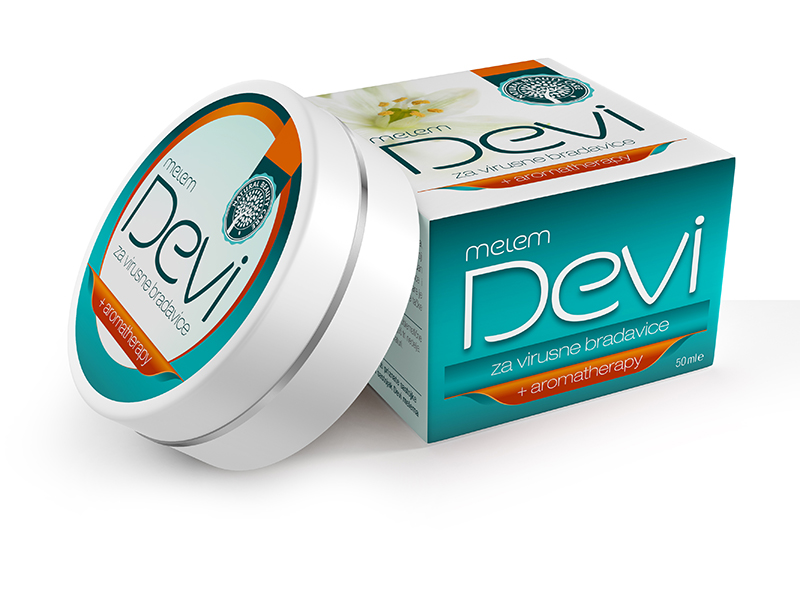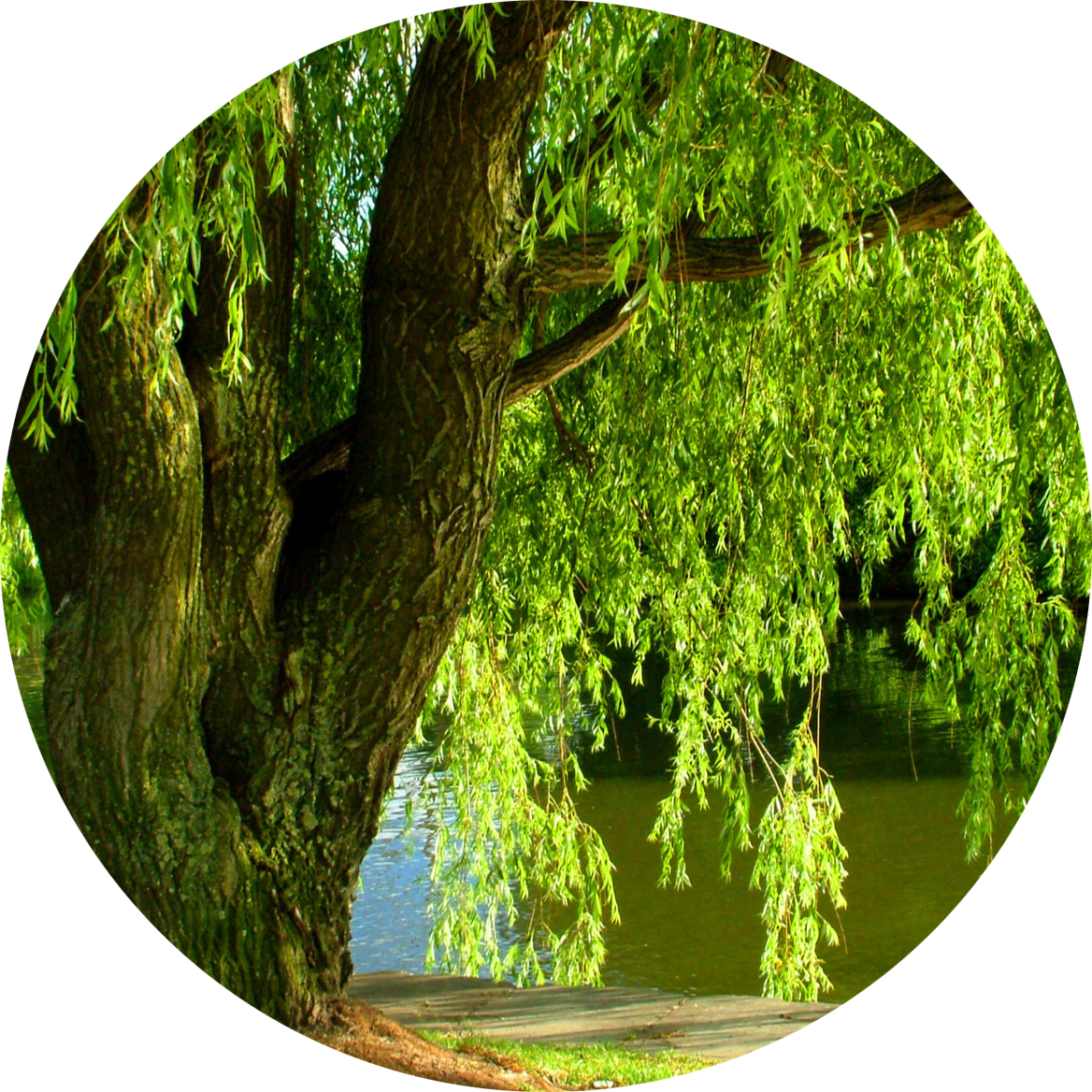(Salicii cortex)
In springtime, willow is the first to come into bud, children are symbolically beaten with its twigs to help them grow and prosper, on St. George’s Day girls weave its twigs through their hair to make it lush, while women tread into water and release willow wreaths down streams and rivers. Willow has long been part of Slavonic rites, customs and beliefs. The Slavonic deity of water, Voden, used to be offered sacrifices in the form of willow wreaths, cookies and vessels filled with incense.
Willow is not only part of Slavonic mythology. This tree, which grows ‘as if from water’, and has the ability to spread with ease by simply inserting its own twigs into the soft soil, even upside down, has understandably become a symbol of prosperity, development, renewal, vitality and immortality. Willow grows on a swampy ground, along streams and rivers, and as its branches fall freely and often touch water surface, it has become a symbol of sadness and unrequited love.
Ancient Celts particularly valued it also because mistletoe which occupied a special place in their rituals and medicine often grows on willow trees. According to the Druid tradition, the world originated from two red eggs hidden in a willow tree. From one egg came the Sun, and from the other the Earth. This story is symbolically repeated every year during the Celtic holiday of Bealtaine, which begins on 30 April and is celebrated over three days, as a ritual of fertility, life and protection from diseases. For this holiday, eggs have been painted red for a long time, and this custom later became part of Christian Easter traditions.
WILLOW, FROM MYTH TO ASPIRIN
Willow is an integral part of Hebrew, ancient Greek, Egyptian, Chinese and many other traditions, and is also used in traditional medicine as much as in rituals. Our ancestors were aware of willow’s healing power, but could not explain it. For centuries, willow has been an indispensable product in pharmacies, since the times of Hippocrates, who recommended its use against fever and inflammation back in 400 BC, and the times of Aula Cornelius Celsus, Pedanius Dioscorides, Gaius Pliny and Galen of Pergamon.
It was only in 1829 that humanity came to know what is so therapeutic about willow – that year French pharmacist Henri Leroux isolated from willow bark a substance he named salicin. It was later used by the German chemist Felix Hoffmann to synthesise acetylsalicylic acid in 1897, which marked the beginning of the production of aspirin in the famous pharmaceutical company Bayer. Today, there is no household that does not have Bayer’s aspirin in its mini home pharmacy, so it could be symbolically said that every house has a part of this mythical tree.
SALIX ALBA ELIMINATES INFECTIONS
There are as many as 500 species of willow, and only three have medicinal properties – white, iva and red. The bark of white willow (known scientifically as Salix alba), is used most: tinctures, extracts, powder and tea can be made from it. It has always been known that willow bark lowers high temperature and soothes inflammation and pain. Today we know that this ancient knowledge is completely justified. Willow bark ingredients are numerous. Willow bark contains phenolic glucosides, salicin, saligenin, salicortin and populin, and tannins, flavonoids – including quercetin – and phytoestrogens, thanks to which it has anti-inflammatory, antiseptic and analgesic effects.
The European Medicines Agency mentions the use of willow to treat the following ailments and disorders:
- headaches, exhaustion and lack of energy,
- symptoms of rheumatism, lower back pain, ankylosing spondylitis, rheumatoid arthritis,
- muscle pain, muscle inflammation, sports injuries,
- fever,
- colds and flu,
- catarrh of the respiratory system.
Numerous studies have proven that willow bark is a more effective and healthier solution for relieving pain than ibuprofen, which can be very harmful when used frequently. Although its main ingredient is salicin, after which it was given its scientific name, its clinical effectiveness lies not solely in salicin, but in the synergy of numerous elements that have anti-inflammatory and analgesic effects. Willow bark extract has been proven to achieve this effect by inhibiting proinflammatory cytokines and inflammation of activated monocytes. The anti-inflammatory effect of willow and its ability to soothe fever were the reason why it was used to treat malaria a few centuries ago.
However, this powerful plant is able to do much more: it was noticed during numerous studies that it can cause apoptosis (cell death) in many cancer cells, and inhibit the growth, motility, proliferation and adhesion of colon cancer cells. The cardioprotective effect of ordinary aspirin is also well known. With its proven antioxidant properties, salix alba protects tissues of both the heart and kidneys, and its anti-thrombotic action prevents heart attacks and strokes.
But it is this property of willow that thins the blood that makes it unusable by people who suffer from coagulation disorders, such as haemophilia; it should also be avoided by patients who suffer from stomach ulcers, diabetes, liver disorders or immediately after surgery. In any case, when combining medications and therapies with products that contain willow bark extract, it is best to consult a doctor first.
WILLOW FOR TROPICAL USE
Willow bark extract has another very important effect: keratolytic and keratoplastic. It has a positive effect on the growth of epidermal tissue and stimulates skin healing, but also breaks down the keratinised layer of the skin and cleans it of the remnants of accumulated and unwanted tissue. Therefore, it is often used for dermatitis, seborrhoea, psoriasis and viral warts. Viral warts occur as a result of an infection caused by the human papilloma virus and are very persistent and unpleasant. They often appear in places where they create irritation; they can also appear in entire clusters and have a negative effect on the appearance of skin.
This is where Devi viral warts balm comes into play. In addition to willow bark extract, which successfully removes unwanted layers of the epidermis, the balm also contains essential oils of tea tree, ravensara, clove and tamanu oil, which powerfully kill viruses, as well as castor oil, which dries warts. This completely natural preparation will painlessly remove viral warts and prevent the formation of new ones, without causing any side effects.
From the beginning of the world to Devi balm, willow has been used not only to look after our health, but also to take good care of the beauty of our skin.

